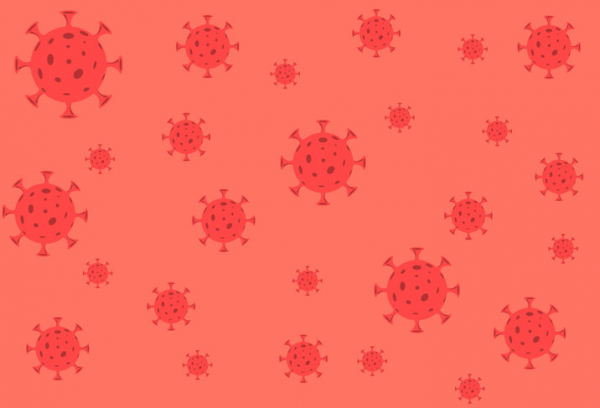
Let’s not kid ourselves: the pandemic is still with us, despite how it may sometimes seem.
Increasingly, people are going back to work in person. Schools reopened this spring. And mask mandates are history in most parts of the US. In many places, case rates are falling and deaths due to COVID-19 have become uncommon. For many, life now closely resembles pre-pandemic normalcy. So, what do you need to know about where we are now?
Not so fast: COVID remains a big problem
The virus is still very much with us, not behind us. According to the CDC, in the US there are nearly 100,000 new cases (likely an underestimate) and around 300 deaths each day due to COVID as of this writing. Despite this, more and more people are paying less and less attention.
That could be a big mistake. With summer travel season here and some dire warnings about fall and winter, it’s worth stepping back, taking a deep breath, and reassessing the situation.
Here are responses to five questions I’ve been hearing lately.
1. I haven’t gotten COVID by now. So, do I still need a vaccine?
Yes, indeed! Vaccination and boosters are the best way to avoid a severe case of COVID-19 infection.
Maybe you’ve been spared infection so far because you’ve been vigilant about physical distancing, masking, and other preventive measures. Or perhaps you’ve inherited genes that make your immune system particularly good at evading the COVID-19 virus. Or maybe you’ve just been lucky.
Regardless of the reason, it’s best not to let your guard down. The SARS-CoV-2 virus that causes COVID is highly contagious, especially the most recent variants. And while some people are at higher risk than others, anyone can be infected and anyone can become seriously ill from this virus. Even if you get a mild or moderate case of COVID-19, remember that some people experience symptoms of long COVID, such as fatigue and brain fog.
2. More and more vaccinated people are getting sick with COVID. And I’ve heard that more COVID-related deaths have occurred since vaccines rolled out than before they were available. So, how much of a difference do vaccines and booster shots really make?
They make a huge difference.
It’s estimated that COVID-19 vaccinations have saved more than two million lives in the US. If vaccination rates had been higher, estimates suggest more than 300,000 additional lives could have been saved.
We know that rates of infection, hospital admission, and death dropped dramatically among vaccinated people soon after vaccines became available. We also know that most severe cases of COVID-19 among the vaccinated occur among people who haven’t had a booster shot. Overall, severe cases and deaths remain much lower among people who are vaccinated and boosted than among people who are not vaccinated.
Is it true that the share of severe COVID cases and deaths occurring among the vaccinated has risen? Yes, but possible explanations for this trend actually show that vaccines continue to protect people from serious illness:
- When rates of infection fall, overall rates of hospital admission and death fall for everyone, vaccinated or not. So, the gap between rates of infection and death between vaccinated and unvaccinated people gets smaller.
- Available vaccines aren’t as effective against new variants of the virus. True, but these vaccines still effectively reduce the risk of severe disease.
- Immunity wanes over time. That’s true for even the best vaccines, which is why boosters are needed. Yet only about a third of the US population has received a COVID booster. That makes it easier for the virus to continue to spread and mutate.
- We’ve now logged more time with vaccines than without them since the pandemic began. Because no vaccine is 100% effective, the numbers of cases and deaths will continue adding up, eventually outnumbering pre-vaccine cases and deaths.
3. First, vaccines were going to solve this. Then we needed one booster shot. Now we need two. What’s happening, and why should I even consider this?
Good questions. The protection provided by most vaccines tends to wane over time. That’s why tetanus shots are recommended every 10 years. We’ve learned that protection against COVID-19 may wane a few months after the initial vaccine doses. A first booster is recommended for everyone who is vaccinated, five months after completing the two-dose Moderna or Pfizer vaccine series or four months after the single-dose J&J vaccine.
Because immunity from the first booster may wane sooner in older adults and people with certain health conditions, another Pfizer or Moderna vaccine dose is now available to those over age 50 and others at particularly high risk.
4. Now that mask mandates are in the rearview mirror and everyone is tired of COVID restrictions, what else helps?
It’s not yet clear that mask mandates should have been lifted as soon as they were, especially when rates of infection were starting to rise again. We’ll only know in retrospect if that was a good idea.
As for other measures, physical distancing, masking up, and other steps still make sense in certain situations. For example, if you’re using public transportation or traveling by air, a well-fitted mask can provide a measure of protection. If you’re regularly exposed to a lot of people and know you will soon be in close contact with someone who is at high risk, mask up and get tested in advance.
5. What’s the bottom line here?
Get vaccinated! If you’re eligible for a booster, get one. It makes no sense to get the initial vaccine and forego boosters. If you’re one of very few people who had a significant reaction to one type of vaccine, ask about getting a different type of vaccine as a booster.
When the pandemic began, few were expecting that more than two years later it would still be causing so much suffering and death. But we shouldn’t pretend it’s over; don’t throw out your masks just yet and do follow public health recommendations. If you’ve decided not to get vaccinated or boosted, think again (and again)!
Yes, we’ve all had it with the pandemic. But I think of it this way: when it looks like rain, throwing out your umbrella and pretending it’s sunny are decisions you’ll probably regret.
About the Author

Robert H. Shmerling, MD, Senior Faculty Editor, Harvard Health Publishing
Dr. Robert H. Shmerling is the former clinical chief of the division of rheumatology at Beth Israel Deaconess Medical Center (BIDMC), and is a current member of the corresponding faculty in medicine at Harvard Medical School. … See Full Bio View all posts by Robert H. Shmerling, MD